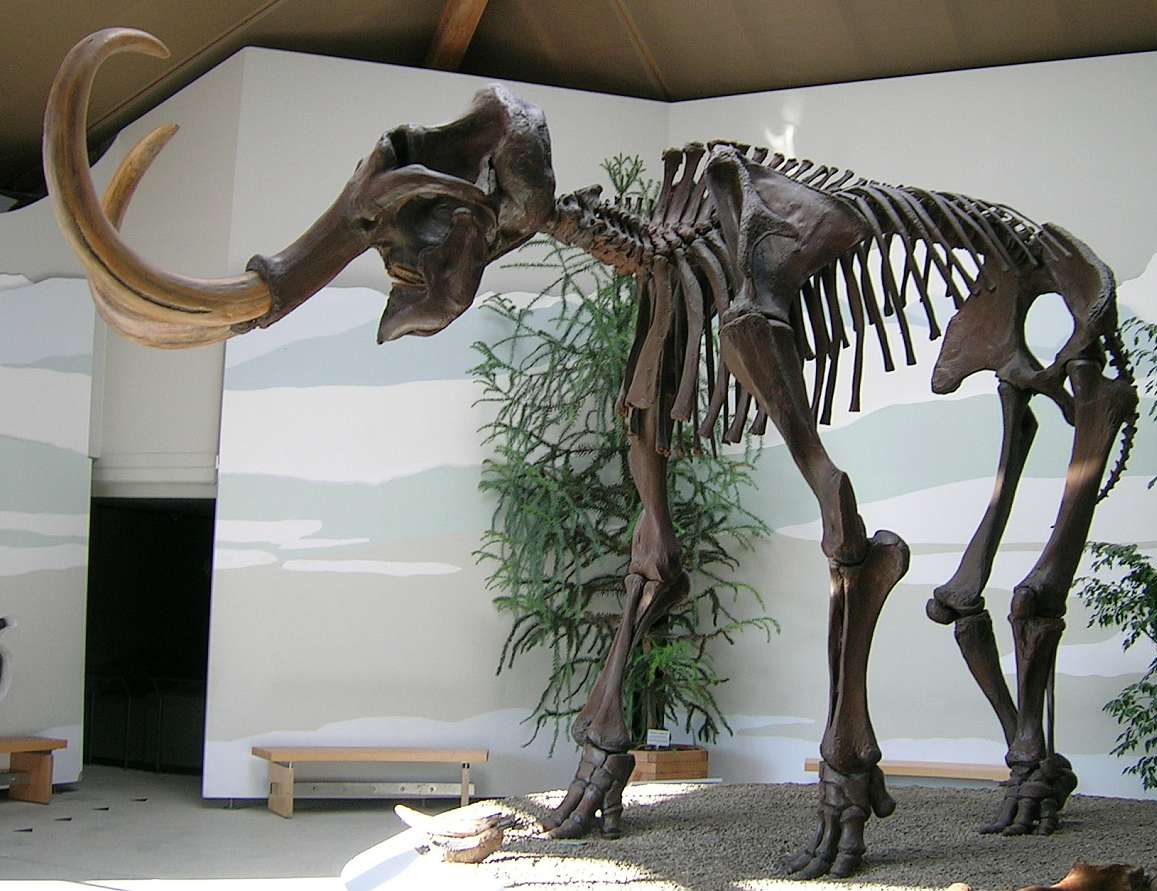The Fascinating Saga of the Extinct Woolly Mammoth
The earth, a vast canvas for the circle of life, has witnessed the rise and fall of countless magnificent creatures throughout history. One such awe-inspiring species, known as the woolly mammoth, captivates our imagination with its sheer size and unimaginable presence. But when did these majestic beings ultimately meet their untimely demise?
To travel back in time to the woolly mammoth’s final chapter, we must journey approximately 4,000 years ago. While it’s important to understand that the timeline may vary based on different scientific accounts, this period provides us with a general idea of their extinction.
During the Pleistocene epoch, starting around 2.6 million years ago, woolly mammoths roamed across various parts of the globe, including Europe, Asia, and North America. Their thick fur adapted to withstand extreme cold weather, allowing them to flourish in ice-age environments. However, as temperatures gradually began to rise towards the end of the epoch, the mammoths faced mounting challenges that would prove insurmountable.
Several theories attempt to explain the precise factors that led to the woolly mammoth’s extinction. Climate change emerges as a compelling culprit, as the warming Earth altered the delicate balance the mammoths had so faithfully adapted to. As the ice began to recede, the mammoths’ habitats rapidly transformed, resulting in dwindling food sources and altered landscapes unfit for their survival.
Notably, the rise of human civilizations played a crucial role in their demise. Early human communities, equipped with evolving hunting techniques, relentlessly pursued mammoths for their meat, bones, and tusks. This persistent hunting pressure, combined with the changing environment, proved to be the final nail in the coffin for these remarkable giants.
While the exact timeline of the woolly mammoth’s extinction remains a subject of continued scientific investigation, it is widely believed that the last remaining populations gradually vanished around 4,000 years ago. Geological records, preserved remains, and ancient artworks provide valuable clues, allowing us to piece together a more comprehensive understanding of our planet’s prehistoric past.
In 2021, the possibility of woolly mammoth resurrection captivates scientific minds worldwide. With advancements in genetic engineering and the discovery of well-preserved specimens in frozen regions like Siberia, some scientists are excitedly exploring the potential for a mammoth renaissance.
The extinction of the woolly mammoth serves not only as a reminder of the delicate balance of ecosystems but also as a poignant cautionary tale. It urges us to acknowledge the importance of responsible resource management and conservation efforts. As custodians of this planet, we must strive to learn from our history and protect the magnificent creatures that still roam our earth today.
As we pay homage to the incredible journey of the woolly mammoth, let their extinction serve as a poignant reminder of the intricate tapestry of life’s rise and fall on this mesmerizing planet we call home.
(Word count: 455)
More About : When Did The Woolly Mammoth Go Extinct
Introduction:
The woolly mammoth, a majestic creature of the past, captivates the imagination with its sheer size and distinctive appearance. For centuries, scientists have sought to uncover the mysteries surrounding this ancient species and understand the circumstances that led to its extinction. In this article, we will delve into the timeline of the woolly mammoth’s extinction, exploring the key events and factors that contributed to its ultimate demise.
1. The Woolly Mammoth: A Forgotten Giant:
– Description of the woolly mammoth’s physical characteristics and habitat.
– Introduction to the significance of this species in history and mythology.
2. Flourishing during the Ice Age:
– Explanation of the Pleistocene epoch and its environmental conditions.
– The woolly mammoth’s adaptation to the frigid temperatures and vast tundra landscapes.
– Overview of the species’ dominance during this time.
3. Shifting Climate and Habitat:
– Discussion of climate change during the late Pleistocene era.
– Detrimental effects of the warming climate on the mammoth’s habitat.
– Loss of tundra and grassland environments, which were critical to the species’ survival.
– The impact of the receding ice sheets on the availability of resources.
4. Human Interactions:
– Emergence of early human populations and their coexistence with woolly mammoths.
– The influence of early humans on the mammoths, including hunting and habitat alteration.
– Examples of ancient art and tools depicting encounters with these creatures.
5. Hunting Pressure and Overexploitation:
– Increased hunting intensity by humans for food, tools, and materials.
– Exploration of evidence that suggests systematic hunting techniques.
– Overhunting leading to a decline in the mammoth population.
6. Genetic Isolation and Decline:
– Genetic isolation due to geographical barriers, limiting natural breeding and diversification.
– Inbreeding depression and lower genetic diversity affecting reproductive rates.
– Small and isolated populations becoming more vulnerable to diseases and environmental factors.
7. The Last Stand:
– Examination of the final stronghold of woolly mammoths on Wrangel Island.
– Analysis of the factors that contributed to their survival on this isolated habitat.
– Eventual extinction of the Wrangel Island population, possibly due to a combination of environmental and genetic factors.
8. Clues from Fossils and Ancient DNA:
– The significance of well-preserved mammoth fossils and their analysis.
– Advancements in ancient DNA studies providing insights into the species’ genetic makeup and its similarity to modern elephants.
– Possibilities of future efforts to revive the woolly mammoth using genetic engineering technology.
9. Modern Preservation and Research:
– The ongoing importance of studying woolly mammoths to unravel their extinction.
– Preservation and display of mammoth specimens in museums for educational purposes.
– Collaborative international efforts to enhance our understanding of extinct species.
Conclusion:
The woolly mammoth, an emblematic creature of the Ice Age, faced a multitude of challenges that led to its eventual extinction. A combination of changing climate, human activities, genetic limitations, and loss of habitat collectively contributed to the demise of this remarkable species. By comprehending the timeline of the mammoth’s extinction, we gain invaluable insights into our own roles as stewards of Earth’s delicate balance and the importance of preserving the biodiversity that remains.
FAQs on When Did The Woolly Mammoth Go Extinct
Q1: When did the woolly mammoth go extinct?
A1: The woolly mammoth went extinct approximately 4,000 years ago.
Q2: What caused the extinction of the woolly mammoth?
A2: While the exact cause is still debated, scientists speculate that a combination of climate change and hunting by early humans played a significant role in the extinction of the woolly mammoth.
Q3: Where were woolly mammoths primarily found?
A3: Woolly mammoths were mainly found in the northern regions of North America, Europe, and Asia.
Q4: How long did woolly mammoths exist on Earth?
A4: Woolly mammoths roamed the Earth for an estimated period of 400,000 years.
Q5: Were humans responsible for the extinction of woolly mammoths?
A5: There is evidence to suggest that early human hunting played a significant role in the extinction of woolly mammoths, although it was likely a combination of factors.
Q6: How did the woolly mammoth adapt to its environment?
A6: Woolly mammoths were well-adapted to cold environments with their long, shaggy hair, humped back, and long, curved tusks.
Q7: Are there any surviving woolly mammoths today?
A7: No, there are no living woolly mammoths. However, some scientists are working on cloning projects to potentially bring them back to life using preserved DNA.
Q8: Did climate change contribute to the extinction of woolly mammoths?
A8: Yes, climate change played a significant role in the decline of the woolly mammoths. As the Earth’s climate warmed, their habitat shrunk, making it difficult for them to find food and survive.
Q9: How big were woolly mammoths compared to modern elephants?
A9: Woolly mammoths were slightly larger than modern-day elephants, with males standing about 10-12 feet tall at the shoulder and weighing around 6-8 tons.
Q10: What are some theories about the extinction of woolly mammoths?
A10: Some theories suggest that overhunting by humans, natural climate change, a decline in available food sources, disease, or a combination of these factors contributed to the extinction of woolly mammoths.




